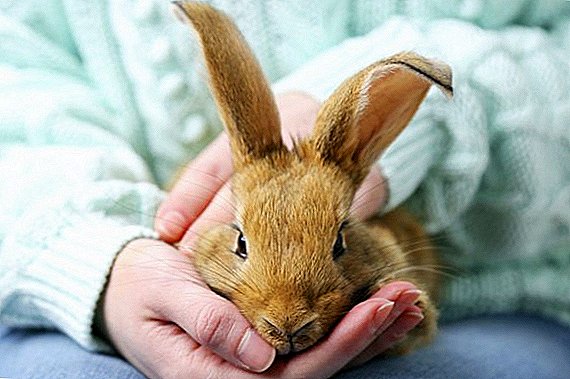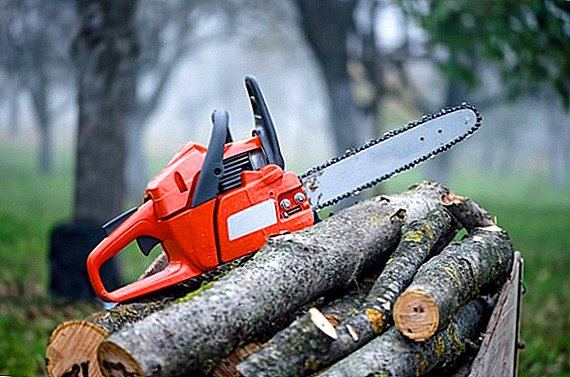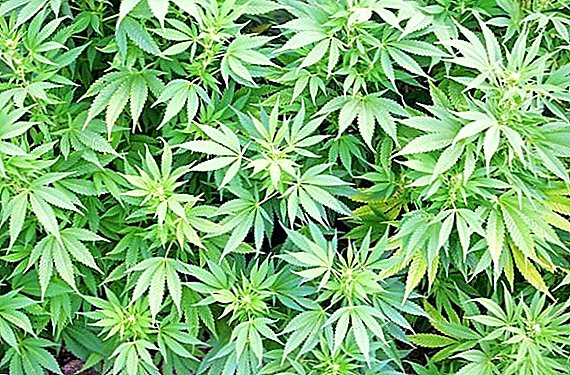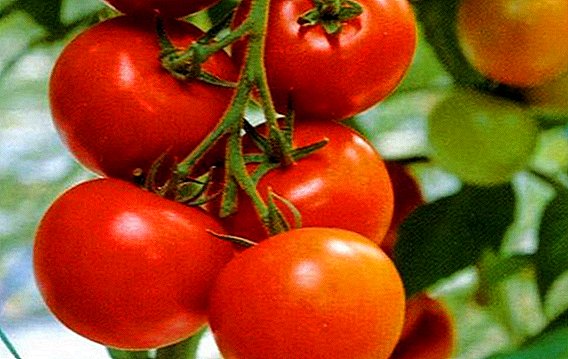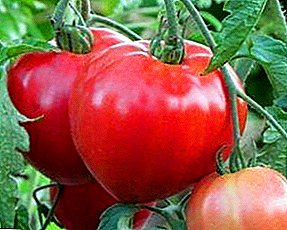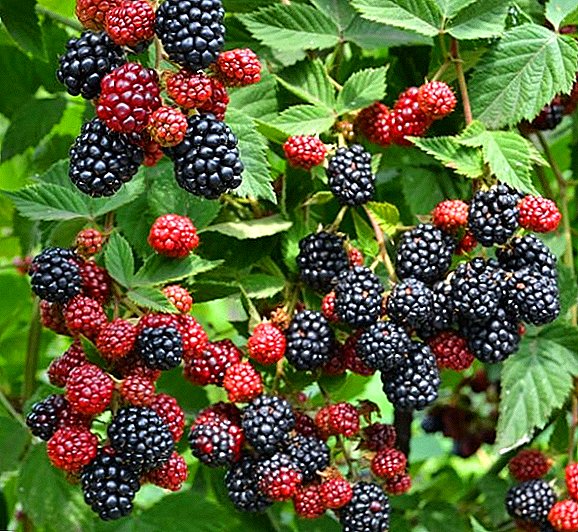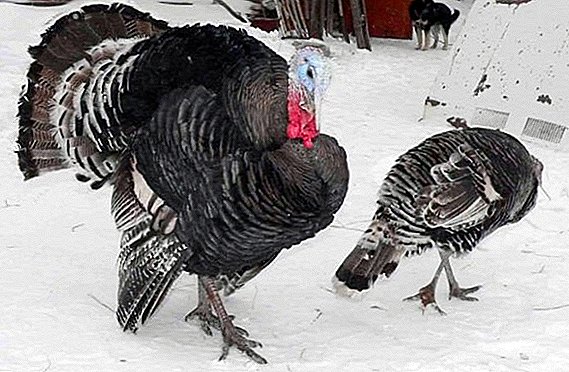 Fighting among poultry is a serious problem that can cause a lot of trouble not only to the members of the feathered herd, but also to their owner, especially if not only males but also females are involved in the fights. However, this state of affairs can be caused not by the quarrelsome nature of the birds, but by quite specific mistakes made by the farmer. Let's try to figure out why turkeys and turkeys are fighting between themselves - what is being done wrong and how to rectify the situation.
Fighting among poultry is a serious problem that can cause a lot of trouble not only to the members of the feathered herd, but also to their owner, especially if not only males but also females are involved in the fights. However, this state of affairs can be caused not by the quarrelsome nature of the birds, but by quite specific mistakes made by the farmer. Let's try to figure out why turkeys and turkeys are fighting between themselves - what is being done wrong and how to rectify the situation.
Why do turkeys and turkeys fight
First of all, a beginner poultry farmer needs to learn a simple truth: turkeys, unlike more flexible chickens and ducks, have a very quarrelsome character. Fights, and not even before the first blood, but before the rival is slaughtered to death, for these birds are quite familiar.  And such "clashes" can occur in any composition of participants: males or females fight each other, turkeys peck turkeys and turkeys, young animals finish off each other.
And such "clashes" can occur in any composition of participants: males or females fight each other, turkeys peck turkeys and turkeys, young animals finish off each other.
Did you know? In wild turkeys, the representatives of the two sexes live separately, meeting only in winter (together it is easier to survive the cold) and during the mating period. At the age of 8-9 months, turkey poults leave the sisters and mothers and unite with other males, after which the long and bloody battles for leadership begin. The defeated or fleeing, or surrenders to the mercy of the winner, lying down on his stomach in front of him and dutifully pressing head to the ground. The victor can kill a defeated opponent with a strong blow to the ridge of the beak or give him life. Thus, a clear hierarchical ladder is built, from the strongest to the weakest.
Therefore, in the household, many farmers also prefer to divide the birds by gender and thereby stop at least intersexual conflicts. But since even in this case, members of the parent flock must sometimes meet, problems may still arise.  However, with all the specificity of the character of turkeys, the constant bloody fights in the herd is not normal, which means you need to try to understand what exactly irritates the bird and provokes it to slander its own relatives.
However, with all the specificity of the character of turkeys, the constant bloody fights in the herd is not normal, which means you need to try to understand what exactly irritates the bird and provokes it to slander its own relatives.
There may be several such reasons.
Unbalanced nutrition
It turns out that excessive pugnacity can provoke ... proteins, or more precisely, protein amino acids. On how much protein food birds consume, how proteins are digested and their combustion products (urea, carbon dioxide, water, and other compounds) are eliminated from the body, ultimately, the mental state of birds depends.
Important! A critical period in terms of diet is the time of molting, including the change of down for plumage in turkey poults. At this point, the protein metabolism is significantly accelerated, the bird loses weight, is deficient in vitamins and minerals, which causes malfunctions in the endocrine glands and nervous "breakdowns".
Both the lack and excess of proteins in the diet can cause aggression in turkeys during the week of such an unbalanced diet. 
Next in the body of birds, a sequence of reactions occurs:
- Vitamin A is destroyed;
- acid-base balance is disturbed (acidosis occurs);
- accumulation of uric acid and deposition of uric acid salts on the visceral surfaces of internal organs and in the joints (uric acid diathesis) occurs;
- the mucous membranes of the cloaca weaken;
- skin dries and cracks;
- the bird is constantly itchy, and it starts to peck at itself;
- such a condition causes severe irritation and an irresistible desire to peck at someone else.
Among the main protein amino acids that directly affect the behavior of turkeys, should be called:
- from glucogenic - arginine, methionine and cysteine;
- from ketogenic - lysine;
- from mixed (gluco-ketogenic) - isoleucine, tyrosine and phenylalanine.

For example, a decrease in the level of conditionally essential amino acid arginine by 40% leads to the fact that the bird begins to lose feathers and show increased aggression towards others.
Important! Turkeys need a special diet - rules designed for other domestic birds are not suitable for them. In particular, they need much more vitamins A, B1, B2 and E, and the proportion of protein foods of animal origin (and with high quality protein) should be 28-30% of the total amount of feed. But calcium turkeys need less than other birds.
Feed for turkeys should contain:
- crude protein - 16%;
- raw fat - 3.2%;
- calcium - 2.8%;
- cellulose - 4.7%;
- phosphorus - 0.7%;
- lysine - 0.66%;
- methionine - 0.51%.
Unsuitable conditions
The character of the "Indian Roosters" may also deteriorate due to improper lighting. Moreover, the problem occurs with an excess of light, and with its lack.  Too bright lighting is especially dangerous during the laying of turkeys.
Too bright lighting is especially dangerous during the laying of turkeys.
It is known that light stimulates egg production, but in the case of this type of poultry, brute force is fraught with harmful consequences: blood vessels in the hens begin to burst from excessive tension of the cloaca, and the kind of foreign blood has the same effect as red turkeys rag on the bull.
Excited relatives in the literal sense of the word pounce on the unfortunate product and can peck it to death.
And the very appearance of a layer reddened by tension, lit from all sides, often provokes the rest of the herd, therefore the presence of a darkened place for laying in the house is an elementary safety measure.
With a lack of light, the story is different. Due to vitamin D deficiency (as it is known, it is produced under the influence of sunlight) birds begin to break down and feathers fall, this condition is accompanied by itching, and turkeys begin to pinch themselves, often to the blood. 
And the blood, as already mentioned, is the first cause of fights. In addition, when problems arise with feathers, birds instinctively try to stimulate the oil gland with their beak to increase the secretion of the secretion wetting the plumage. These actions also cause skin irritation and bloody cracks.
Did you know? Turkeys are capable of carrying fertilized eggs even long after successful mating. Moreover, their chicks are sometimes born even from unfertilized eggs! And in such cases, only males are born, quite healthy and fertile (capable of producing viable offspring). This amazing phenomenon of the immaculate conception in the animal world, known as "virginity," turkeys, as scientists believe, inherited from their ancient ancestors - dinosaurs.
In addition to the wrong lighting, "self-disseminating", turning into a mass slaughter, can be explained:
- unsuitable microclimate in the house (for example, too dry air, as well as a lack of vitamin D, causes breakage of feathers; aggression can also cause hypothermia);
- the state of health of the feathered herd (in particular, inflammation in the oviduct, cloacitis and other problems with cloaca, intestinal disorders, etc.);
- the presence in the herd of injured individuals;
- infection with various parasites, the probability of which increases many times over, if the room is too crowded, damp or dirty, there is not enough feeding troughs and drinking bowls, other sanitary and hygienic rules are violated.

Too close house
Too close chicken house is dangerous not only due to the fact that it is easier for the inhabitants to catch any infection.
Learn how to build a turkey-hen with your own hands, how to keep turkeys in the winter at home.
The permissible number of heads per square meter of area depends on several factors, namely:
- breeds (heavy meat crosses require more free space; in addition, some turkey breeds are very aggressive by nature, they too cannot be settled too closely);
- the age of the birds;
- conditions of detention (joint or separate by gender).
Important! If fights occur most often indoors, not during walking, this may indicate that the size of the “living space” is too small for the number of birds living on it. Another possible reason - the wrong interior arrangement of the room. The more space there will be in each individual, the less likely the "showdown" inside the herd.
On average, one should proceed from the following rules:
| Age of birds | Males (individuals per 1 sq. M) | Females (individuals per 1 sq. M) | Content sharing |
| 1-8 weeks | 3,5 | 4,5 | 4 |
| 9-12 weeks | 3 | 4 | 3 |
| 13-17 weeks | 2 | 3 | 3 |
| 18-21 weeks | 1 | 2 | 2 |
| 22-30 weeks | 1 | 2 | 2 |
| Adult birds | 1 | 2 | 1,5 |

It is necessary to allocate at least 30 cm of personal space on perches and perches of each adult. When turkeys are transported, metal battered cages are used with an area of 40x40 cm and a height of 50 cm.
Flirting
It is important to understand that a fight between turkeys does not always mean conflict. Sometimes it is part of the marriage ritual. As in humans, females reach sexual maturity much earlier than males and therefore begin to show interest in the opposite sex at a time when the latter does not yet need it.
Unrealized sexual attraction is a direct cause for aggression, and a rejected woman can easily become enraged.
Important! During the mating season, turkeys often try to attract the attention of the males with loud and sharp screams, walking around them in circles, and can use to achieve the goal of sharp claws and beak.
If at the time of such behavior both birds have reached sexual maturity, there is nothing terrible in it, but still it is advisable to pay special attention to their feathered herd in this crucial period for it. 
Fight for leadership
Another cause of fights associated with the implementation of sexual instinct, is the traditional clarification of the relationship between males. The characteristics given to their close relatives S. Marshak can be fully attributed to turkey poults: "young males are fighters, mischievous, horloder, bullies, they spend the whole day in a fight."
Familiarize yourself with the peculiarities of keeping at home such popular breeds of turkeys like Uzbek fawn, black Tikhoretskaya, Grade maker, Highbreed converter, Canadian, Victoria.
The right to dominate the pack must be earned. Mainly - by challenging the rights of other applicants or an established leader. This turkeys are engaged constantly, showing all their strength and anger.
And in order to discourage the younger generation from even the potential desire to claim leadership, adult males can kill turkey poults to death.
The only way to cope with this problem is to divide the poults by age and the content of each group separately from each other and from the adult herd.  However, turkeys also do not differ angelic character. They also establish a certain hierarchy among themselves, and therefore they are very jealous of strangers who can break the usual distribution of forces.
However, turkeys also do not differ angelic character. They also establish a certain hierarchy among themselves, and therefore they are very jealous of strangers who can break the usual distribution of forces.
For this reason, it is very dangerous to plant a “new girl” of any sex into an established turkey family — bloody “fights” in this case are simply inevitable.
Did you know? If there are several turkeys in the herd, only one person who has won the first place in the hierarchy has the right to cover the female. All other males play the role of observers or extras. For this reason, turkeys often encounter such a phenomenon as homosexuality.
Treatment of affected birds
Any bird injured in a scuffle, even if the injuries it has received are insignificant, it is necessary to isolate it immediately and immediately, otherwise the herd will not calm down and will finish off the injured relative. In addition, the continuation of the fight may lead to new victims.  If the wounds bleed heavily, they should be treated with an antiseptic. For this purpose, the drug "ASD fraction 2" is well suited, it is also called the "stimulator of Dorogov".
If the wounds bleed heavily, they should be treated with an antiseptic. For this purpose, the drug "ASD fraction 2" is well suited, it is also called the "stimulator of Dorogov".
The uniqueness of the remedy lies in the fact that it not only tightens the wound, but also deters others from the sick animal, which is why veterinarians like this antiseptic very much.
Further, since the cause of the biting can lurk in the victim’s state of health (problems with feathers, cloaca, intestines, etc.), treatment should be directed not only at healing wounds, but also at resolving the problem that provoked the attack.
It will also be useful for you to find out how useful and how much calories a turkey meat is, about the benefits and dangers of turkey liver, and whether turkey eggs can be eaten.
Depending on what the problem is, add to the ration of the affected individual:
- amino acids arginine, methionine, cystine, as well as preparations containing bromine (in violation of protein metabolism);
- sulphates of iron, copper, manganese, cobalt chloride, sodium selenite (with pronounced problems with plumage);
- vitamins and minerals.

Preventive measures
To fight in the house was less, experts advise to adhere to the following rules:
- Correctly form a herd: contain young, dividing it by age and sex; do not mix turkeys of different breeds (some of them have a genetic predisposition to destroy their own kind); in the mating period to create separate families consisting of only one male and five to seven females.
- Pay special attention to high-quality, balanced and complete diet, enriched with fiber, protein amino acids and vitamins. The feeding of birds with crushed grain, oats, oilcake and meal also contributes to a decrease in calving. The presence of abrasive materials in food contributes to the grinding of the beak, thereby reducing its traumatic risk. The composition of the feed must also include salt.
- Set in the house a constant lighting mode: not too bright, in a uniform color scheme (preferably dull white or bluish).
- Provide turkeys maximum space - both in the house and on the range.
- Comply with the sanitary and hygienic standards of birds' flocks: moderate humidity, dry and clean litter, lack of moisture, drafts, temperature conditions within 20 ° C, regular harvesting, preventing droppings from entering the trough and drinkers, etc .;
- Protect the herd from stress and contact with wild animals;
- Prevent infectious diseases, including vaccination.
 A separate way to fight the bloody conflicts among turkeys is mechanical "disarmament" of birds. In addition to cutting sharp claws, a method called "debriding" is used for particularly aggressive breeds. It consists in cutting the beak of the poults already in the first weeks of their lives.
A separate way to fight the bloody conflicts among turkeys is mechanical "disarmament" of birds. In addition to cutting sharp claws, a method called "debriding" is used for particularly aggressive breeds. It consists in cutting the beak of the poults already in the first weeks of their lives.Important! Poor housing conditions can cause not only rabies attacks in turkeys, but also attacks of the real depression itself. The bird will sit still, breathing heavily and sighing, can pretend to be dead or even ... commit suicide: with overclocking, banging your head against the wall until another blow is fatal.
Very often, poultry farmers, who first started breeding turkeys, lose almost all the livestock due to the fact that they mistakenly transfer to this bird all the knowledge they have acquired while keeping chickens.
The turkey, meanwhile, although it is a distant relative of the hen, differs radically in character, behavior, and needs. This specificity must be taken into account, as hungry and dissatisfied living conditions turkeys become angry and begin to mercilessly kill each other.
Feedback from network users




